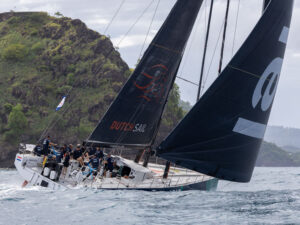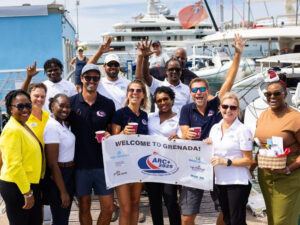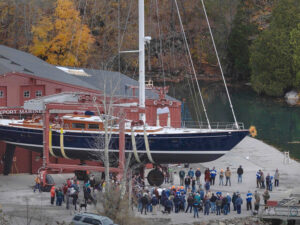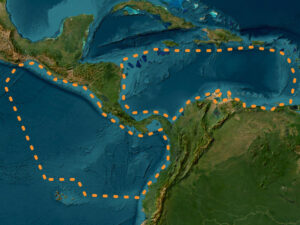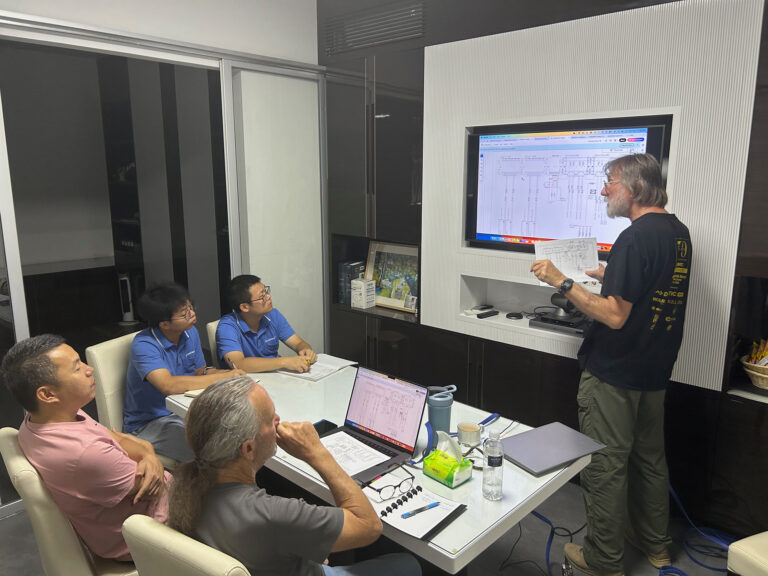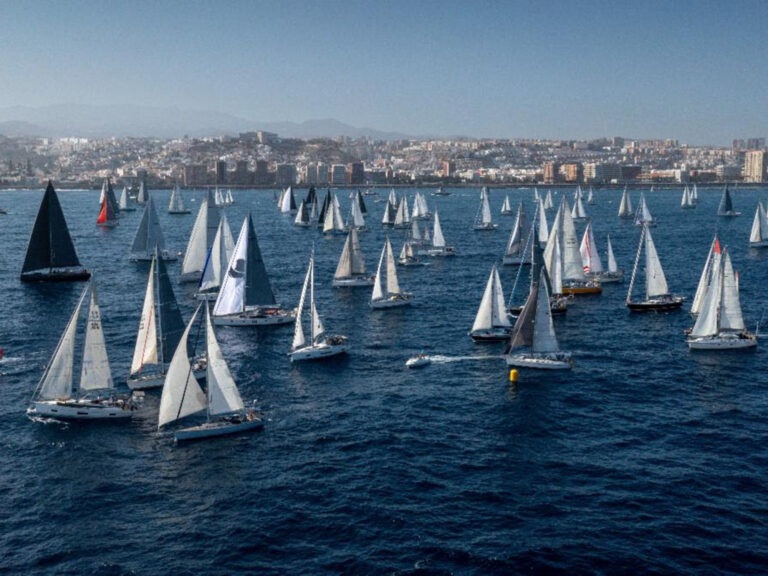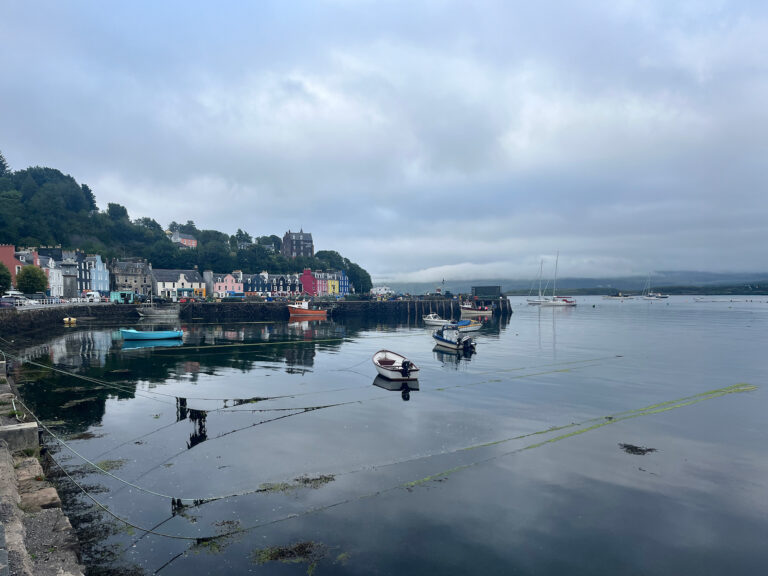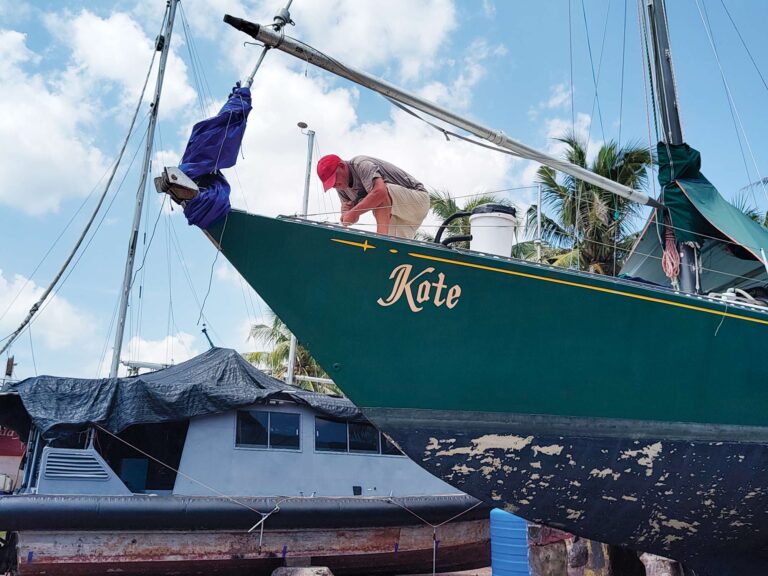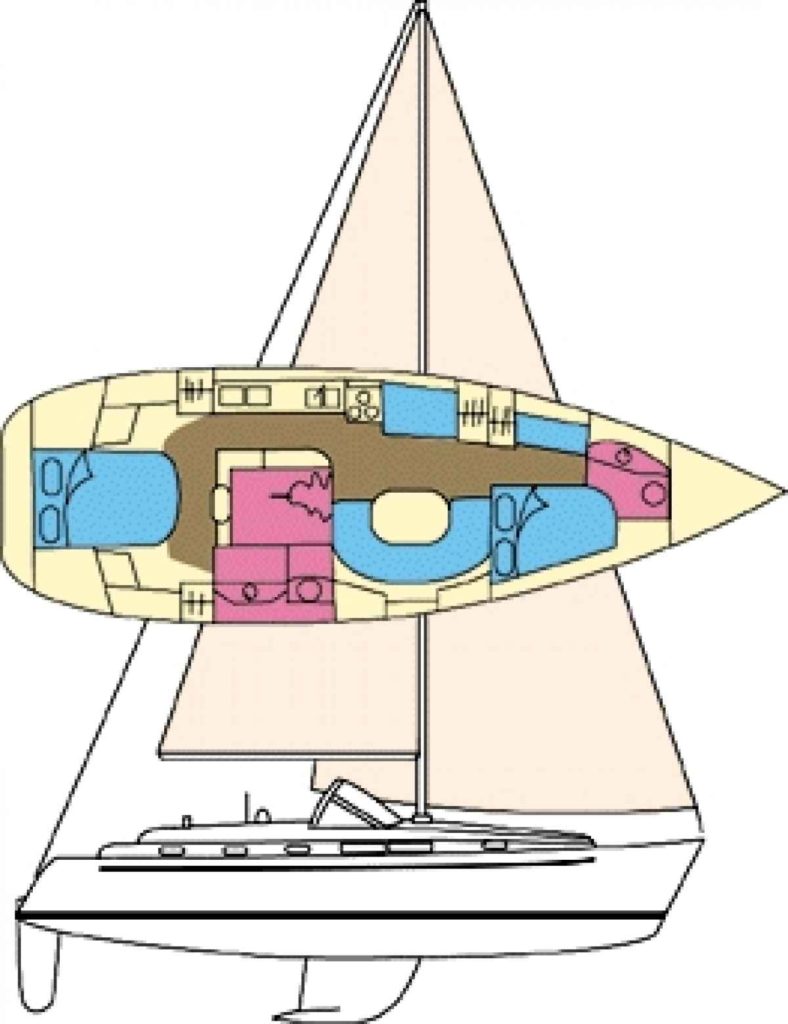
Beneteau Oceanis 400 CC
Notably new on the shelves of the big production builders these days are mid-cockpit versions of their popular conventional aft-cockpit boats. To be sure, the trend makes sense. You take a proven hull, organize some new deck tooling, reconfigure the weight distribution and all of a sudden you’ve got a smooth-sailing cruiser with a whole new look and huge gains in interior volume. So it is with the Beneteau Oceanis 400 CC, introduced in the fall of 1995 and by now hands-down a successful addition to the Beneteau fleet. This boat maximizes spaciousness and big-boat accommodations in a 40-foot hull — and all for a relatively low price.
The side decks are narrow for a boat this size, a compromise driven by the need to enhance living space below. The foredeck has a large opening anchor locker; it must be opened to step on the windlass switch and this is truly astute from the point of view of safety. The dual anchor roller is fabricated in stainless and appears to be rugged and led fair. The deck opening through which the chain must run was rectangular with 90-degree corners on our test boat; preferable and less likely to hang up ground tackle is an oval or rounded hawse pipe in this location. A dual-tank propane locker is recessed into the side deck with fume drain overboard. The topsides are protected by a stainless steel rub rail, an important cruising feature surprisingly omitted on many boats. A more serious feature often omitted on boats today is a planned proper location to mount a survival raft; happily, aboard this vessel there are sturdy attachment points designed to secure a life raft on the coach roof.
The deck is joined to the hull with mechanical fastenings every six inches and 3M 5200 adhesive/sealant. The hull is fabricated of hand-laid solid fiberglass with an isophthalic gel coat to impair osmosis, and of course it comes with Beneteau’s dependable five-year structural and osmotic warranty. A molded fiberglass grid is bonded to the hull to provide structural integrity, which includes reinforcing the hull itself and accepting torsional, compressive and tensile loads associated with the rigging and use. The deck is of sandwich construction, cored with end-grain balsa. The standard keel is cast-iron with a winged bulb and it is bolted to the hull; an aluminum mast is stepped on the top of the keel.
The cockpit backrests will be low for some people; one would assume that this detail is designed to keep the overall profile of the vessel low and aesthetically pleasing. More importantly, it makes for easier movement from the cockpit to the decks. The wheel is pedestal mounted, but may be ordered mounted on the aft side of the cabin behind a spray shield. This is an amenity-driven option that brings the typical center-cockpit cruiser into the motor sailer realm.
The sugar-scoop stern provides a swim and dinghy boarding space where you’ll find a locker for storage of swim gear behind the transom steps, a swim ladder and a cockpit shower.
Entering the saloon from the cockpit, the companionway steps are curved up on each side for improved footing on a heel. The interior saloon area is light and cheerful. A U-shaped settee and expandable table fill the starboard side. On the port side are a nav station and hanging locker. Aft in the passageway, to port of the engine area, is the galley — comfortable, well thought out, with quick access to the cockpit and the saloon. A three-burner stove with oven is located forward to channel cooking heat and odor up and out the companionway.
Hanging lockers have ceiling liners at least to the waterline for protection against mildew and condensation. The forward stateroom has a double berth to starboard. To port are a locker and settee; a prospective owner might investigate reconfiguring the space for better storage. The bed of course has good capacity beneath in drawers. The head forward includes a shower.
The engine space provides terrific access to the 60-horsepower Yanmar diesel, particularly around the after end where you have to go to reach the stuffing box and transmission. There is a hatch built into a galley cabinet for side access. The companionway stair swings open on hydraulic lifts to give you the forward end. The builder indicates that the space aft of the engine will house a generator; this is attractive in terms of an energy consumption scenario, but the installation of a power unit in this location could limit access to the engine and stuffing box appreciably.
The aft stateroom includes a very low berth along the bottom of the hull, wide and easily accessed from both sides. There is a small hanging locker, a small vanity with mirror and some storage. Two side opening ports, one transom opening port, one port opening into the coaming and two Dorade vents all provide plenty of light and air. The aft head is forward of this stateroom on the starboard side of the engine space. The head includes a shower in the toilet section.
Systems are well done, though with compromises. Overall access to thru-hulls is good; unfortunately we didn’t find them labeled. Steering is hydraulic with reasonable access for servicing. Emergency steering access is well addressed, but the hardware on the 400 we inspected consisted only of a pipe section that fitted loosely and wobbled a bit. The electric panel is hinged and allows good access. Halogen lamps provide good lighting with low-current draw.
Performance was fine under sail and power. We hopped aboard the test boat in Newport, Rhode Island, in six to eight knots of air with flat seas. Roller furling certainly made sail handling an uncomplicated exercise, but it didn’t do the mainsail any favors in terms of horsepower or performance. The considerable volume and hence payload of this “big” 40-footer has an impact on ultimate speed through the water. For this reason a conventional-hoist, higher-performance main might make some sense to a dedicated sailor. Certainly the Groupe Finot hull is slippery and well engineered, despite the notion that the boat in its standard configuration is not intended to be a PHRF bandit
Suffice it to say, the Beneteau Oceanis 400 Center cockpit optimizes comfort and easy living in a way that few boats in this price range and size category can approach. It is, in simple terms, a nicely turned out cruiser.
Beneteau Oceanis 400 Center Cockpit Specifications:
LOA: 41’0″ (12.5 m.)
LWL: 36’9″ (11.2 m.)
Beam: 12’9″ (3.95 m.)
Draft (bulb/wing): 5’6″ (1.7 m.)
Ballast: 5,300 lbs. (2,404 kgs.)
Disp: 18,740 lbs. (8,500 kgs.)
Sail area (100%): 687 sq.ft. (63.8 sq.m.)
Mast above water: 52’8″ (16.1 m.)
Ballast/Disp: .29
Disp/Length: 169
SA/Disp: 15.6
Fuel: 53 gal. (200 ltr.)
Water: 132 gal. (500 ltr.)
Auxiliary: Yanmar diesel 60-hp
Cabin headroom: 6’3″ (1.9 m.)
Designer: Groupe Finot
Base: $179,280 (9/1/96, FOB S.C.)
Beneteau USA Inc.
24 North Market St.
Suite 201
Charleston, SC 29401
Phone (803) 805-5000
To read more Cruising World reviews of Beneteau sailboats, click here. To visit Beneteau America’s website, click here.

